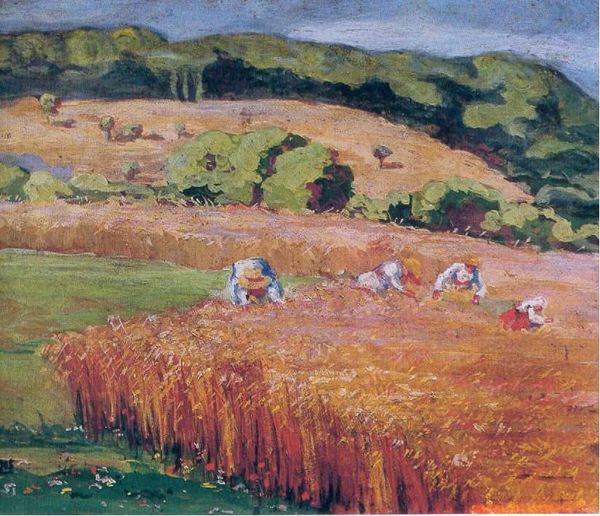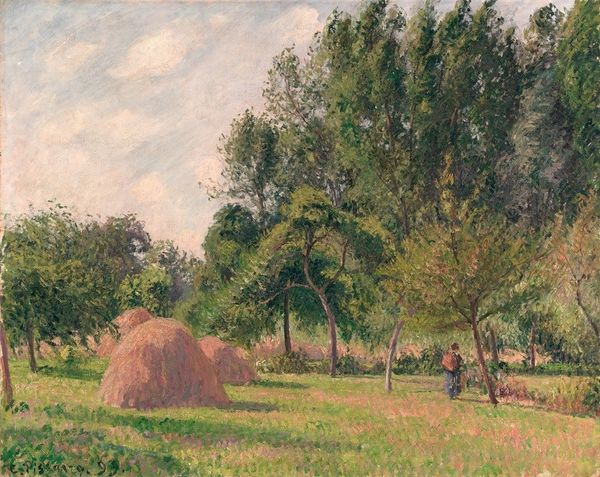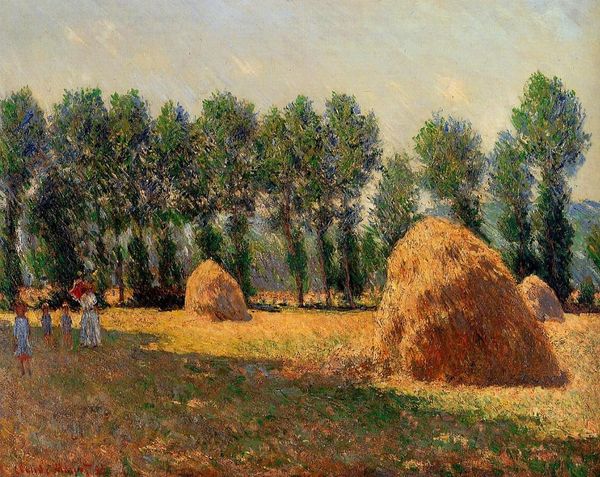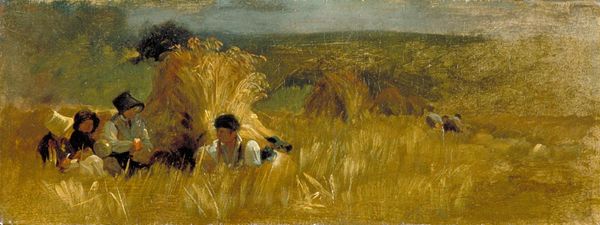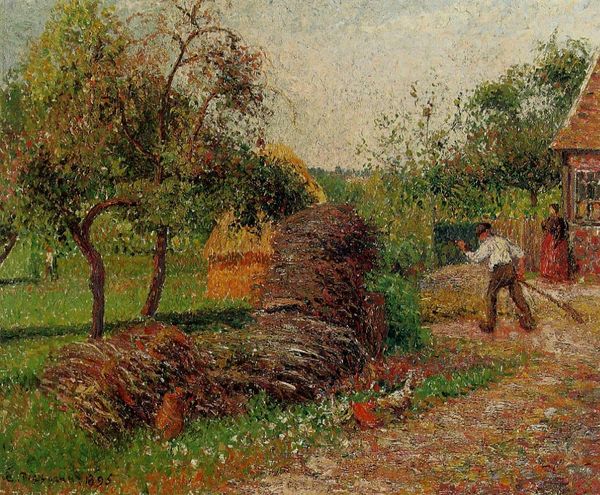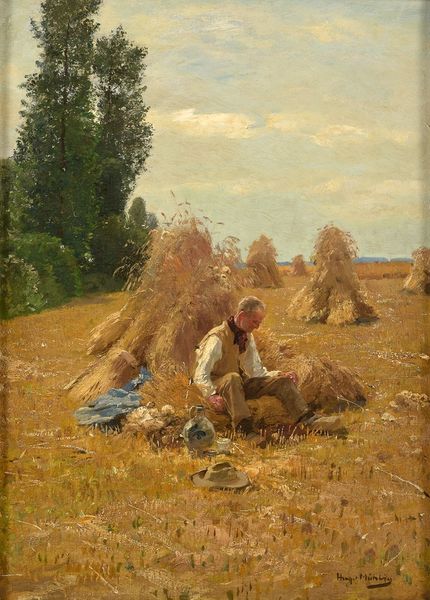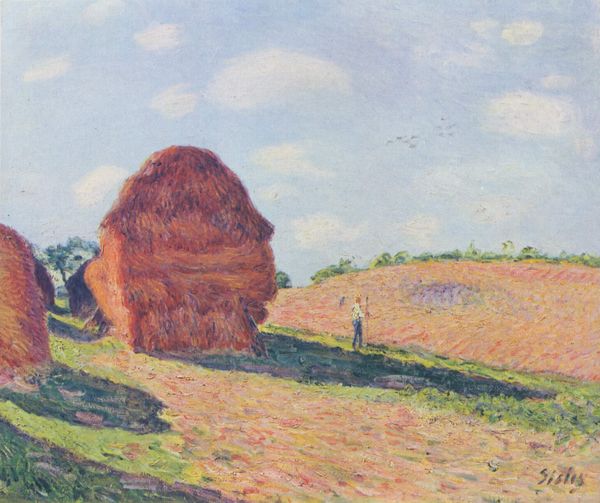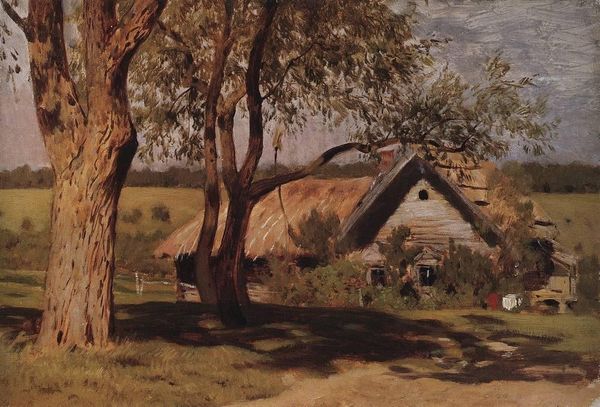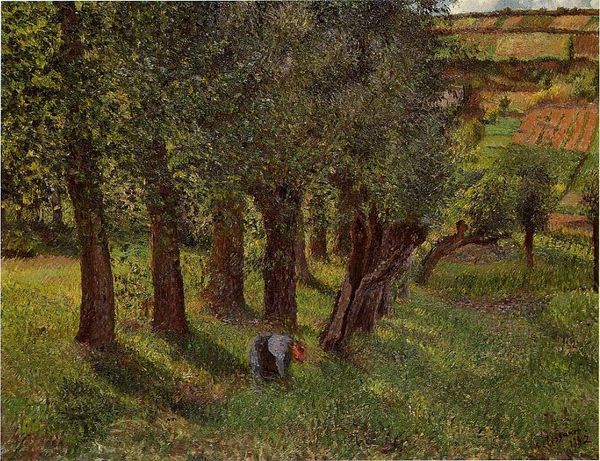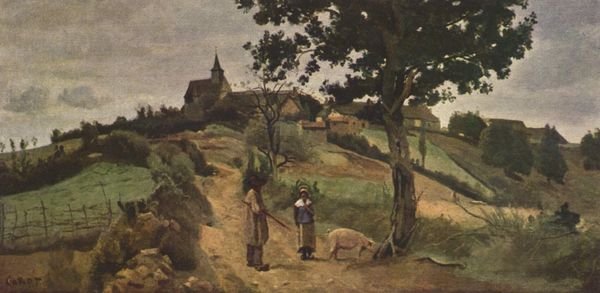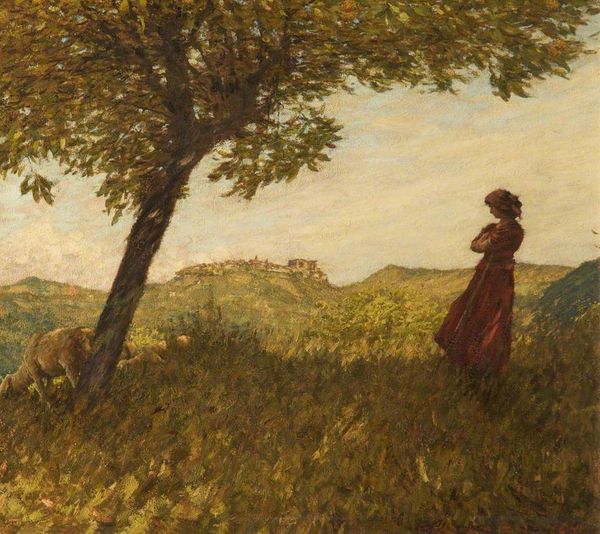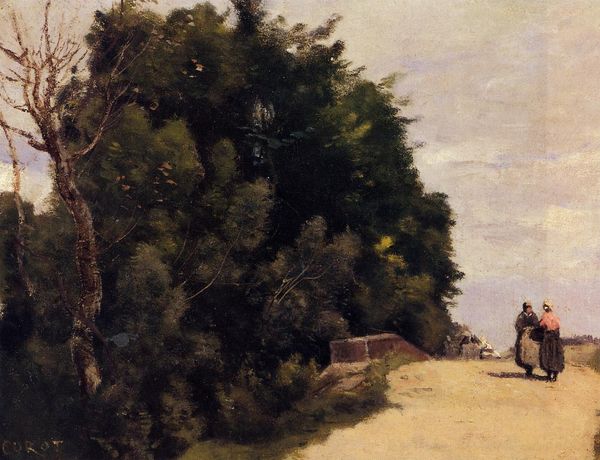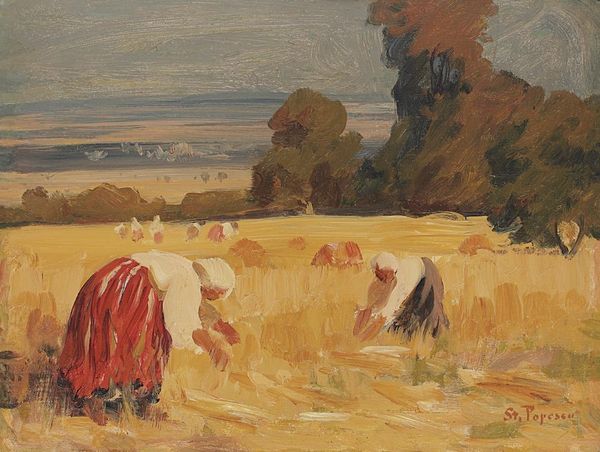
Copyright: Public domain
Camille Pissarro painted 'The Siesta' with oil on canvas during the late 19th century. It depicts a woman, presumably a peasant worker, taking a midday rest against a large haystack in a rural landscape. Pissarro was deeply interested in the lives of rural laborers. He often sought to represent them with dignity and respect. This interest grew from a broader social consciousness that developed in France during the late 1800s, marked by increasing social unrest and the rise of socialist ideas. The art institutions of Pissarro's time, like the Salon system, were often criticized for their conservative tastes. Impressionists like Pissarro challenged these institutions by focusing on everyday subjects and painting 'en plein air' – that is, outdoors. By doing so, they aimed to capture the fleeting effects of light and atmosphere, and to democratize the very act of seeing. To understand this painting, one might consult historical records about rural life in France, the artist's letters, and critical writings. The meaning of art is always contingent on its historical and social context.
Comments
No comments
Be the first to comment and join the conversation on the ultimate creative platform.
